[Editor’s Note: Mad Scientist Laboratory is pleased to publish our latest “Tenth Man” post. This Devil’s Advocate or contrarian approach serves as a form of alternative analysis and is a check against group think and 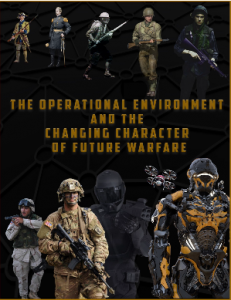 mirror imaging. The Mad Scientist Laboratory offers it as a platform for the contrarians in our network to share their alternative perspectives and analyses regarding the Operational Environment (OE). We continue our series of “Tenth Man” posts examining the foundational assumptions of The Operational Environment and the Changing Character of Future Warfare, challenging them, reviewing the associated implications, and identifying potential signals and/or indicators of change. Enjoy!]
mirror imaging. The Mad Scientist Laboratory offers it as a platform for the contrarians in our network to share their alternative perspectives and analyses regarding the Operational Environment (OE). We continue our series of “Tenth Man” posts examining the foundational assumptions of The Operational Environment and the Changing Character of Future Warfare, challenging them, reviewing the associated implications, and identifying potential signals and/or indicators of change. Enjoy!]
Assumption: The character of warfare will change but the nature of war will remain human-centric.
 The character of warfare will change in the future OE as it inexorably has since the advent of flint hand axes; iron blades; stirrups; longbows; gunpowder; breech loading, rifled, and automatic guns; mechanized armor; precision-guided munitions; and the Internet of Things. Speed, automation, extended ranges,
The character of warfare will change in the future OE as it inexorably has since the advent of flint hand axes; iron blades; stirrups; longbows; gunpowder; breech loading, rifled, and automatic guns; mechanized armor; precision-guided munitions; and the Internet of Things. Speed, automation, extended ranges,  broad and narrow weapons effects, and increasingly integrated multi-domain conduct, in addition to the complexity of the terrain and social structures in which it occurs, will make mid Twenty-first Century warfare both familiar and utterly alien.
broad and narrow weapons effects, and increasingly integrated multi-domain conduct, in addition to the complexity of the terrain and social structures in which it occurs, will make mid Twenty-first Century warfare both familiar and utterly alien.
The nature of warfare, however, is assumed to remain human-centric in the future. While humans will increasingly be removed from processes, cycles, and perhaps even decision-making, nearly all content regarding the future OE  assumes that humans will remain central to the rationale for war and its most essential elements of execution. The nature of war has remained relatively constant from Thucydides through Clausewitz, and forward to the present. War is still waged because of fear, honor, and interest, and remains an expression of politics by other means. While machines are becoming ever more prevalent across the battlefield – C5ISR, maneuver, and logistics – we cling to the belief that parties will still go to war over human interests; that war will be decided, executed, and controlled by humans.
assumes that humans will remain central to the rationale for war and its most essential elements of execution. The nature of war has remained relatively constant from Thucydides through Clausewitz, and forward to the present. War is still waged because of fear, honor, and interest, and remains an expression of politics by other means. While machines are becoming ever more prevalent across the battlefield – C5ISR, maneuver, and logistics – we cling to the belief that parties will still go to war over human interests; that war will be decided, executed, and controlled by humans.
Implications: If these assumptions prove false, then the Army’s fundamental understanding of war in the future may be inherently flawed, calling into question established strategies, force structuring, and decision-making models. A changed or changing nature of war brings about a number of implications:
– Humans may not be aware of the outset of war. As algorithmic warfare evolves, might wars be fought unintentionally, with humans not recognizing what has occurred until effects are felt?
– Wars may be fought due to AI-calculated opportunities or threats – economic, political, or even ideological – that are largely imperceptible to human judgement.  Imagine that a machine recognizes a strategic opportunity or impetus to engage a nation-state actor that is conventionally (read that humanly) viewed as weak or in a presumed disadvantaged state. The machine launches offensive operations to achieve a favorable outcome or objective that it deemed too advantageous to pass up.
Imagine that a machine recognizes a strategic opportunity or impetus to engage a nation-state actor that is conventionally (read that humanly) viewed as weak or in a presumed disadvantaged state. The machine launches offensive operations to achieve a favorable outcome or objective that it deemed too advantageous to pass up.
- – Infliction of human loss, suffering, and disruption to induce coercion and
 influence may not be conducive to victory. Victory may be simply a calculated or algorithmic outcome that causes an adversary’s machine to decide their own victory is unattainable.
influence may not be conducive to victory. Victory may be simply a calculated or algorithmic outcome that causes an adversary’s machine to decide their own victory is unattainable.
– The actor (nation-state or otherwise) with the most robust kairosthenic power and/or most talented humans may not achieve victory. Even powers enjoying the greatest materiel advantages could see this once reliable measure of dominion mitigated. Winning may be achieved by the actor with the best algorithms or machines.
- These implications in turn raise several questions for the Army:
 – How much and how should the Army recruit and cultivate human talent if war is no longer human-centric?
– How much and how should the Army recruit and cultivate human talent if war is no longer human-centric?
– How should forces be structured – what is the “right” mix of humans to machines if war is no longer human-centric?
– Will current ethical considerations in kinetic operations be weighed more or less heavily if humans are further removed from the equation? And what even constitutes kinetic operations in such a future?
 – Should the U.S. military divest from platforms and materiel solutions (hardware) and re-focus on becoming algorithmically and digitally-centric (software)?
– Should the U.S. military divest from platforms and materiel solutions (hardware) and re-focus on becoming algorithmically and digitally-centric (software)?
– What is the role for the armed forces in such a world? Will competition and armed conflict increasingly fall within the sphere of cyber forces in the Departments of the Treasury, State, and other non-DoD organizations?
– Will warfare become the default condition if fewer humans get hurt?
– Could an adversary (human or machine) trick us (or our machines) to miscalculate our response?
Signposts / Indicators of Change:
– Proliferation of AI use in the OE, with increasingly less human involvement in autonomous or semi-autonomous systems’ critical functions and decision-making; the development of human-out-of-the-loop systems
 – Technology advances to the point of near or actual machine sentience, with commensurate machine speed accelerating the potential for escalated competition and armed conflict beyond transparency and human comprehension.
– Technology advances to the point of near or actual machine sentience, with commensurate machine speed accelerating the potential for escalated competition and armed conflict beyond transparency and human comprehension.
– Nation-state governments approve the use of lethal autonomy, and this capability is democratized to non-state actors.
– Cyber operations have the same political and economic effects as traditional kinetic warfare, reducing or eliminating the need for physical combat.
 – Smaller, less-capable states or actors begin achieving surprising or unexpected victories in warfare.
– Smaller, less-capable states or actors begin achieving surprising or unexpected victories in warfare.
– Kinetic war becomes less lethal as robots replace human tasks.
– Other departments or agencies stand up quasi-military capabilities, have more active military-liaison organizations, or begin actively engaging in competition and conflict.
If you enjoyed this post, please see:
… as well as our previous “Tenth Man” blog posts:
-
- “The Tenth Man” — War’s Changing Nature in an AI World, by Dr. Peter Layton.
-
- “The Tenth Man” — Russia’s Era Military Innovation Technopark, by Mr. Ray Finch.
Disclaimer: The views expressed in this blog post do not necessarily reflect those of the Department of Defense, Department of the Army, Army Futures Command (AFC), or Training and Doctrine Command (TRADOC).

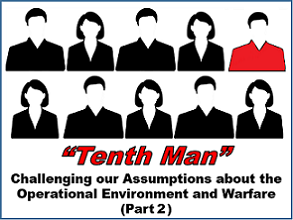


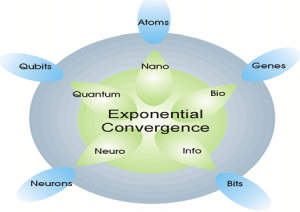 Our foundational assumption about the Future Operational Environment is that the Character of Warfare is
Our foundational assumption about the Future Operational Environment is that the Character of Warfare is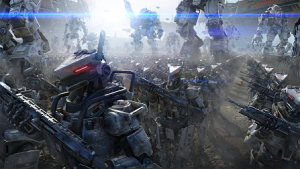
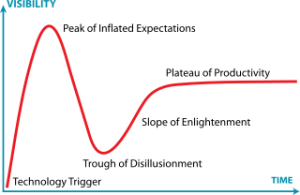
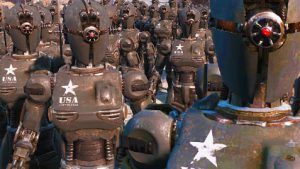
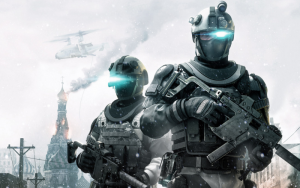 4. Coalition Warfare: A technology-enabled force will exasperate interoperability challenges with both our traditional and new allies. Our Army will not fight unilaterally on future battlefields. We have had difficulties with the interoperability of communications and have had gaps between capabilities that increased mission risks. These risks were offset by the skills our allies brought to the battlefield. We cannot build an Army that does not account for a coalition battlefield and our
4. Coalition Warfare: A technology-enabled force will exasperate interoperability challenges with both our traditional and new allies. Our Army will not fight unilaterally on future battlefields. We have had difficulties with the interoperability of communications and have had gaps between capabilities that increased mission risks. These risks were offset by the skills our allies brought to the battlefield. We cannot build an Army that does not account for a coalition battlefield and our 
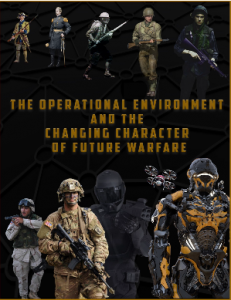 [Editor’s Note: The following post addresses the Era of Contested Equality (2035-2050) and is extracted from the U.S. Army Training and Doctrine Command (TRADOC) G-2’s
[Editor’s Note: The following post addresses the Era of Contested Equality (2035-2050) and is extracted from the U.S. Army Training and Doctrine Command (TRADOC) G-2’s  Changes encountered during the Future Operational Environment’s Era of Accelerated Human Progress (the present through 2035) begin a process that will re-shape the global security situation and fundamentally alter the
Changes encountered during the Future Operational Environment’s Era of Accelerated Human Progress (the present through 2035) begin a process that will re-shape the global security situation and fundamentally alter the  Post-World War II liberal order and assert or dispute regional alternatives to established global norms. State and non-state actors compete for power and control, often below the threshold of traditional armed conflict – or shield and protect their activities under the aegis of escalatory WMD,
Post-World War II liberal order and assert or dispute regional alternatives to established global norms. State and non-state actors compete for power and control, often below the threshold of traditional armed conflict – or shield and protect their activities under the aegis of escalatory WMD, 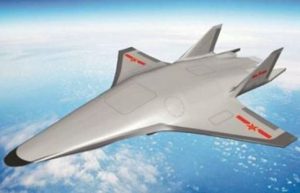 It is not clear whether the
It is not clear whether the 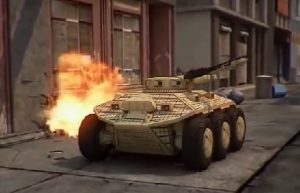 mid-Century, while other states, and combinations of states will rise and fall as challengers during the 2035-2050 timeframe. The security environment in this period will be characterized by conditions that will facilitate competition and conflict among rivals, and lead to endemic strife and warfare, and will have several defining features.
mid-Century, while other states, and combinations of states will rise and fall as challengers during the 2035-2050 timeframe. The security environment in this period will be characterized by conditions that will facilitate competition and conflict among rivals, and lead to endemic strife and warfare, and will have several defining features. identity politics will challenge global governance and broader globalization, with both collective security and globalism in decline. States share their strategic environments with networked societies which increasingly circumvent governments unresponsive to their citizens’ needs. Many states will face challenges from insurgents and global identity networks – ethnic, religious, regional, social, or economic – which either resist state authority or ignore it altogether.
identity politics will challenge global governance and broader globalization, with both collective security and globalism in decline. States share their strategic environments with networked societies which increasingly circumvent governments unresponsive to their citizens’ needs. Many states will face challenges from insurgents and global identity networks – ethnic, religious, regional, social, or economic – which either resist state authority or ignore it altogether. This diffusion of knowledge and capability and the aforementioned erosion of long-term collective security will lead to the formation of
This diffusion of knowledge and capability and the aforementioned erosion of long-term collective security will lead to the formation of